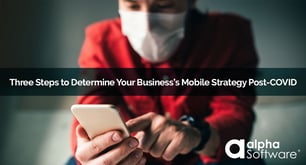Recent research from the MIT Sloan Center for CISR explains how CIOs can create successful digital workplaces.
Traditionally run companies have a hard time figuring out how to create the best workplace to compete in the digital economy. That spells problems for them, because success in the digital economy “depends on transforming how work is done to create digital workplaces and improve employee experience,” concludes a recent paper in MIS Quarterly Executive by Kristine Dery and Ina Sebastian of the MIT Sloan Center for Information Systems Research, and Nick van der Meulen of the University of Amsterdam.
The paper, titled “The Digital Workplace is Key to Digital Innovation,” is a very deep dive into what needs to be done to transform the existing workplace into a digital workplace, including investing in employee connectedness and responsive leadership. It’s well worth reading the entire piece, which includes several in-depth case studies of companies who have done it successfully.
For CIOs who are looking for the most important high-level takeways, here are the authors’ four recommendations for how CIOs can create successful digital workplaces.
Ensure the Organization Appoints a Digital Workplace or Employee Experience Leader
A CIO should make sure a C-suite leader is appointed “who has end-to-end accountability for employee experience and keeps the digital workplace high on the strategic agenda.” The CIO should then work with him or her to “effectively manage a test-and-learn environment focused on employee experience.” The report says that active CIO involvement in this way will “ensure an integrated approach that addresses both employee connectedness and responsive leadership—the prerequisites for driving innovation in the digital era.”
Define Customer Experience and Employee Experience and Use Them as the Basis for Digital Workplace Design
CIOs should take the lead to in doing this. As guidance, the report recommends: “One way to define these experiences is to map customer journeys and employee journeys and then explicitly link them when considering the requirements for the digital workplace. The workplace design should enable employee experience targets to be built into every customer digital innovation.”
Develop an Evidence-Based Approach to Managing Employee Experience
Only by using actual data can the best employee experience be built. To do that, the report says, data must be gathered from multiple sources, including “online platforms that encourage employee feedback and idea sharing, social media analytics, usage data provided by IoT sensors, helpdesk queries and interaction with digital workplace champions.” Once the information is gathered, IT needs to develop web-based dashboards to distribute insights gained from the data-gathering to both employees and leadership. Doing that will create an “iterative, organization-wide management approach to continuously assessing and improving employee experience.”
Distinguish Between Systems that Improve Employee Experience and Employee Wellbeing
It’s easy to think a better employee experience is the same as better employee wellbeing. But it’s not, the report says, and it’s important to distinguish between the two when designing a better digital workplace. Systems that support employee wellbeing including things such as lighting control, heating regulation, control of window coverings, and apps that manage health funds. Systems that improve employee experience “include fast log-in, mobility, efficient onboarding and other capabilities that enable employees to get their work done more effectively.”
Both employee experience and employee wellbeing should be under the management of the CIO. In that way, the report concludes, “IT leaders can ensure that they define and deliver a great employee experience, rather than simply being focused on enhancing employee wellbeing.”
Get access to the full report: “The Digital Workplace is Key to Digital Innovation."
Further reading:
Learn how to screen your employees for COVID-19 and keep your employees safer with our Workplace Wellness app.







Comment